Unabi is an exotic plant, the delicious fruits of which are similar to the dates, has the same mass of useful and healing properties.
Content |
It turns out that this subtropical plant is possible to grow in the middle lane of Russia. Unpretentious, frost-resistant, yield culture without loss withstands frost to -30 0S. It is enough to know the features of landing and care of the UHA to receive annual high yields of unusual berries. The combination of exotic decorative decorativeness with undemanding and endurance, every year attracts an increasing number of gardeners.
Unabi in the middle lane, description of the plant
Fruit culture, Unabi, has a lot of others, no less exotic and unusual, titles: Ziziyndus, Chilon, Jujuba, Yuyuba Chinese, Cupjik, Chinese dike. All this is one subtropical plant of the family crash.
- Looks like a plant in the form of a barbed leaf falling shrub or a tree, reaching a height of up to 10 m. But such tall specimens meet, mainly in the natural subtropics (in America, Africa, Asia). For our regions, low-grade decorative types of unabody are characterized, increasingly growing above 2-3 m.
- The trunk of the plant is covered with a thickened layer of durable bark. Branches are not densely seated by barns.
- Leaves - elliptical shape, simple, shortcut. Buying a seedling of Unabi, you should pay attention to its leaves. Smooth leaf leaf plate has three main, clearly defined, embossed veins.
- The kidneys of the plant dissolve lately, which favorably affects the development of culture in the regions with the "unbalanced" climate and frequent return freezers. Flowers are small, light green shade, with a pleasant thin aroma.
- Fruits - the main advantage and value of culture. On the sight, they are unspoilt: smooth, ovoid shape, red brown, but juicy bone of the fetus is characterized by sweet, nutritious and tasty pulp. Fruit culture begins at an early age, being a very small and low trees or shrub. Immature fruits first have a green color, but as ripening - they darken, acquiring brown shades. The size of the fruit depending on the variety varies: from 2 to 40 g. The offended fruits of unabins become soft and wadded. Unabi fruits often compare with dates and indeed they are in many ways similar (color, size, sweet taste).
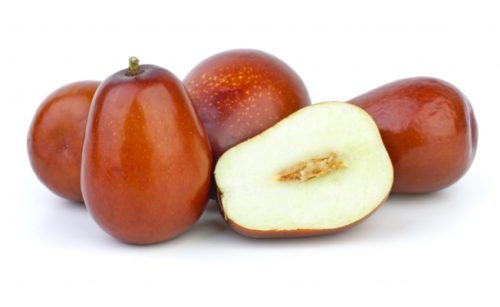
- China is considered to be China, as well as some provinces of India and Iran, where culture ancient is cultivated on an industrial scale. The plant is widespread in countries with a warm, subtropical climate. Especially often there is a thermal-loving culture at open and sunny plots. In Russia, in the wild, Unabi can be found in the Caucasus.
- One of the main advantages of the plant is considered to be his ability to quickly ripen and fruit. Even when boarding the seed, the crop can be obtained by the second year of culture. Naturally, at first a yield is low (about 10-15 c / ha), at the age of 5-6 years, yield increases by 3-6 times, and from 15-20 years it can be 150-300 centners with hectares.
- They are cultivated to obtain sweet, tasty and healthy fruits. In addition, culture is widely known as a medicinal plant.
- Unabi is rightfully considered unpretentious, durable and resistant to unfavorable conditions, a plant. In natural natural conditions, the trees live until 200-250 years, in the middle strip - 2 times less. Heat and light-loving culture can safely carry not only a long drought, but also lowering the winter temperature to -30 - 32 0C. Quality data makes it possible to grow this interesting bone culture and in the middle lane of Russia.
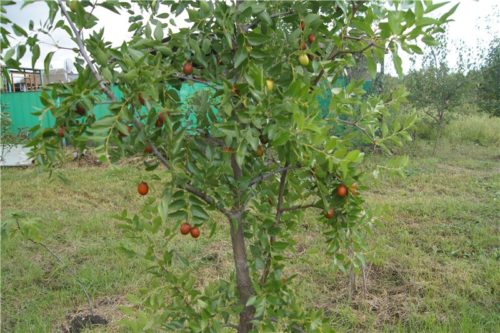
Usani useful properties
- The maintenance of the fetuses of the unsociety of ascorbic acid, easily friendly sugars, proteins, mineral salts, pectins, vitamins, microelements and other active substances, make culture with a valuable nutritious product.
- The fruit culture has long been famous in Chinese folk medicine and was used as a toning, soothing, diuretic and sedative.
- This unusual fruit is useful to people suffering from diabetes mellitus, hypertension, avitaminosis, anemia and other diseases. In Pharmacology, Uanabi is used to produce biologically active additives.
- The fruits are used both in fresh and in recycled (citades, compotes, jams). After drying, the flesh is easily separated from the bone and it becomes even sweeter.
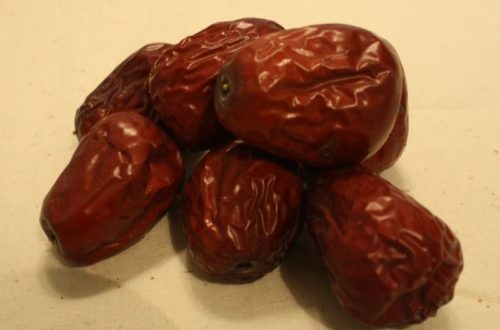
- Fruits are characterized by excellent transportability and can be stored in the refrigerator up to 2 months.
- Not only the fruits are appreciated, but also other parts of the Chinese chinese plant. So, the young leaflets of Unabi are superior to the content of vitamin "C" even fresh Lyme fruits. In silk farming, the leaves are considered to be a valuable nutritional product of the feeding of silkworms. The bark and roots of the plant are rich in tannies and dyes widely used in production on the dressing and painting of the skin. The solid wood of Uanabi is a raw material for the manufacture of musical instruments and other products from wood.
- A plant planted on ravines or slopes, thanks to the formation of numerous root crops, the soil is perfectly fixed and prevents the emergence of soil erosion, manifestation of landslides and collaps.

Growing Uanabi in the middle lane: selection of varieties
In the world, more than 400 tons are cultivated by Unabi. But for the regions of the middle band, not all types and varieties of the Chinese dotnic are suitable.
- The moderately continental climate of the middle strip of Russia, with snowy winter and wet summer, requires certain conditions for growing cultural varieties of plants.
- In these regions, they plant mainly shrub varieties of unabins or grafted shapes with a low straw and wide scattered crown.
- The late period of flowering (mid-June) allows the plant painlessly, after all spring frosts, productively pollusive and fruit. Cross-polished plant blooms long enough, from 1 to 2 months. Flowers are formed mainly on perennial side shoots and partly on the growth of the current year.
- The ripening period of fruit lasts from 2 to 4 weeks and falls on September-October month.
- Unbi's fine varieties are the most damned and endless cultures.
- The Chinese china is considered more frost-resistant than, for example, grapes and perfectly tolerate frosts even when - 30 0S. But even after the frozen, the Unabi is rapidly restored and continues to be fruit. Such a high regenerative ability of culture is highly appreciated by the gardeners of the middle strip of Russia.
- Given the characteristics of the climate of the middle strip, the cultivation variety should be selected with the earliest time of ripening and increased frost resistance. Among these varieties are the most popular are: "drinkers", "Chinese 60", "Sochisky1", "Temryuksky 1", "Chinese 93", "Friendship", "Pinik".
- But so that the Unabi is guaranteed to take root in the complex medium strip climate, it is best to grow a local frost-resistant shape of a bone. Such seedlings will be most adapted to the climatic conditions of the region.
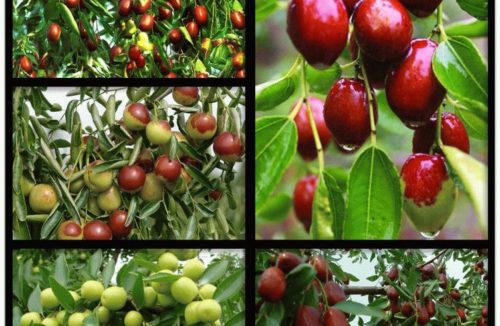
Growing Uanabi in the middle lane: breeding features
Given the fact that Uanabi is a cross-pollinated plant, it is better to plant at least 2-4 seedlings, different varieties.
Uanabi is easily multiplied with seeds, root piglets (siblings), cuttings or by vaccinations. For valuable large-scale varieties, only vegetative methods of breeding are suitable. Seeds of such varieties at home do not germinate.
Consider the most popular methods of breeding.
Reproduction of Unabildren with cuttings in the middle lane
- For reproduction with stalling, weighing is used (on vaccinated) and green cuttings.
- Most gardeners prefer a proven and efficient way to vaccinate varietal cuttings for unbeat's fine-free seedlings.
- You can grow a seedlock independently of the bone of a fine variety. For this, the seed of unbi sow in the soil in the fall, and in the spring, in order to increase the germination, the shock is covered with polyethylene. A gentle seedlove already next spring will be ready for the vaccination with a cutlets. A seaside method of growing seedlings on dilt is suitable.
- The cuttings are harvested with spring or autumn trimming and stored in wet sawdust in a cool place (for example, in the cellar).
- Cherenkov vaccine techniques are traditional: on the trunk of a seedling, it is necessary at an altitude of 5-6 cm from the ground to cut off the dick on the pencil; Then make 2 cm incisions in the crust in which and insert a cutlery with a kidney; Place of vaccinations to tie the film, and the upper cut of the cutter is treated with garden harr. A grafuchery culture on 1 \\ 3 it is necessary to glue the earth.
- In the summer, in the first half of June, Unabi can be tried to multiply with green cuttings. The most acceptable this method of breeding for fine varieties of Unabi. About a month after landing, the cuttings are rooted in the soil.
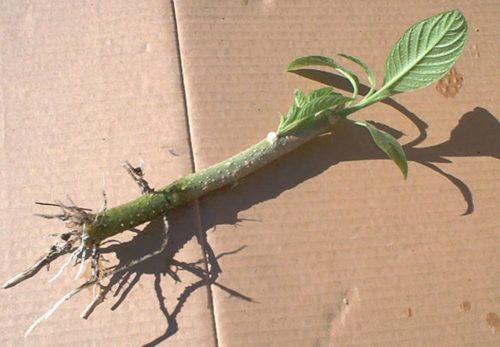
Reproduction of unabi seeds in the middle lane
- For reproduction, seeds are selected well-ridden fruits, the bones are removed and stored them until sowing. Unbi seeds retain the germination of up to 3 years.
- Sowing bones in a container with a soil is carried out in March, while the seeds are pre-(in winter) stratified.
- Stratification involves the content of seeds for 3 months in wet sawdust at a temperature of 0-5 0C. For these purposes, you can use the bottom of the refrigerator or cellar.
- Before sowing, it is better to additionally stimulate the germination of seeds. To do this, the bone is slightly covered with a hammer and lowered in warm water for a day. Seeds, highlighted in the ocoplodnik, is very difficult to germinate. The effects on the bones of high temperatures are also practiced when they are poured with water heated to +60 0S. The warming procedure is repeated three times a day for 2-3 days.
- The swollen seeds are planted into the ground to a depth of 2 cm. The container is put in the illuminated warm place, with a temperature of about 15 0WITH.
- Spring seedlings in phase 2-3 leaves are transplanted into open ground. The first days of the seedlings are covered by direct sunlight.
- You can hear the seeds of unsaluable in open soil, but later, when establishing steadily warm weather. For the winter, seedlings are dipped with soil (or foliage) by 10-15 cm.
- The Chinese china, grown from seed, grows less decoratively attractive and has lower therapeutic properties. As a rule, spikyless fine varieties are obtained.
Growing Unabi: conditions and agricultural landing
- Place for planting is chosen taking into account the preferences of the plant: solar, open, protected from drafts and winds. In the shade, culture ceases to be fron.
- The soils are absolutely not demanding. The only condition is the lack of heavy clay or too saline soils. Moderately fertile soil is favorably affecting the growth and development of the plant.
- Planting the plant in the middle strip is carried out late in spring. In the autumn plants often do not have time to take care of frosts and frozen.
- Planting seeds into the ground is made to a depth of 3-4 cm. Then the area is poured and covered with film. After about a month and a half, the first searches appear. The strengthened grown seedlings thin, leaving the distance between the plants of about 25 cm. For the winter, the seedlings are insulated with the gluttony of the trunk. A year later, seedlings transplant to a permanent place. Do not worry if the plant does not file "signs of life", the growing process of vegetation begins much later than other cultures.
- Landing seedlings in the ground precedes the preparation of the wells. In the dug hole with a size of 1m x 1m, organic or mineral fertilizers are added. After that, the seedling is placed in the pit, spread the roots and fall asleep the earth. The soil around the seedling is compacted, watered and mulched. The distance between the seedlings is withstanding about 3-4 m, taking into account the subsequent growing crown.
Growing Unabi: Plant Care
It is easily growing, thanks to the unpretentiousness and endurance of the plant. A viable culture is resistant to diseases and is absolutely not damaged by pests. Such properties are highly appreciated by gardeners, demanding a minimum of attention to the leaving of the plant.
Watering and mulching are unsalued in the middle lane
- Uanabi - drought-resistant culture, does not tolerate excessive moisture.
- It is enough to water the plant 3-4 times in the season, and even then, subject to a long lack of precipitation. During the tie of fruit (in June), the plant is better not to water, then the harvest will be even better.
- In more frequent irrigation, only a young rooting seedling is needed.
- At the end of summer, watering is stopped. This makes it possible to avoid cracking of fruits and allows you to get off to the winter completely.
- After irrigation or rain the soil you need to explode and climb, not reaching the barrel to 10 cm. In order not to damage the surface roots of the plant, the peopling under the crown does not conduct. The loosening is carried out carefully so as not to damage the root system.
Fertilizer and feeding of Uanabi in the middle lane
- Support is carried out twice the season. For these purposes, both mineral and organic fertilizers are used.
- For successful wintering and stimulating plant growth, it is recommended to make nitrogen-containing complexes in the spring, and in the fall - phosphorus-potash fertilizers.
- Fertilizers are entered in moderate quantities, according to the instructions. Moreover, young seedlings require significantly smaller standards of feeding, rather than adult cultures.
Crawing Unibi in the middle lane
- Unabi needs proper formation of the crown (without the central escape - the leader). Pruning is beginning to produce in the first year of the development of a seedling so that the first-order skeletal branches are formed to the two-year age. For this purpose, the Stack is laid, a central conductor is cut up to 80 cm and the main first-order shoots are left.
- On the 3rd year of life, the branches of the second order are formed. To do this, on the skeletal branches of the first order (50-60 cm from the strain), the most developed side shoots (2-4 branches) are left and shortening them for 2-3 kidneys. The rest, located between them, are cut off, leaving only the lower fruit branches.
- The top of the skeletal branch of the first order is shortened by 2 interstices. After proper trimming on each first-order branch, 2-4 second-order branches are obtained.
- The same pruning scheme is used for the 4th year, laying the branches of the following order.
- In addition to the forming trimming, the branches of the Unbi are thinned to clarify the crown, removing dry, intersecting or broken branches.
Harvesting Unibi in the middle lane
- The ripening of fruits is disappeared in autumn. They are easily broken or shamed with a tree.
- If the fruits do not have time to grow to the onset of frosts, they are broken and they are ripening in a lyhead. This moment is especially relevant for the middle strip, when the first frosts begin early.
Preparation of Unabi for Winter in the middle lane
- Considering the subtropical origin of Unabi, this fruit culture is distinguished by the middle level of frost resistance (up to -25-30 0WITH). A plant is especially vulnerable during the period of temperature fluctuations when the thaws are thawed with sharp frosts.
- To prevent the frozen of young seedlings, the trunks are plunged on 1 \\ 3 for the winter, and the seedling is wrapped with a film or other nonwoven material.
- Adult plants insulate only in the regions where winter temperatures can fall below -35 0WITH.
- Unbi has the ability to quickly regenerate, therefore, even if shoots and frozen in winter, the crown is quickly restored.
conclusions
- Given the unpretentiousness, endurance and frost resistance of the plant, Uanabi can easily grow in the middle strip.
- SPRING, rapidly anticipation culture is valued due to nutritious and healing properties of fruits.
- For growing in the middle lane, it is important to choose the frost-resistant early varieties of Unabi to have time to collect the crop of fruits before the onset of cold weather.
- Culture is absolutely undemanding in care, resistant to diseases and pests.
- Landing and care for unbi in the middle band has a number of features related to the specifics of the climatic conditions of the region.
- The long-lived plant will be able to please the surrounding bold yields of delicious and useful berries.
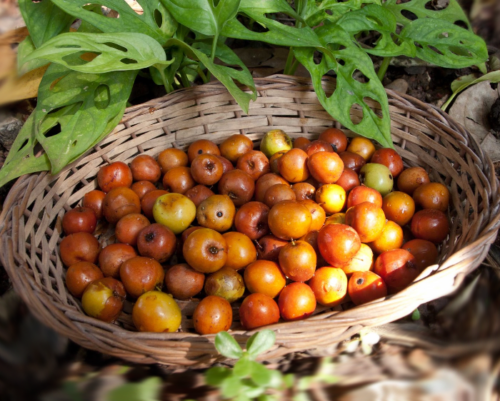

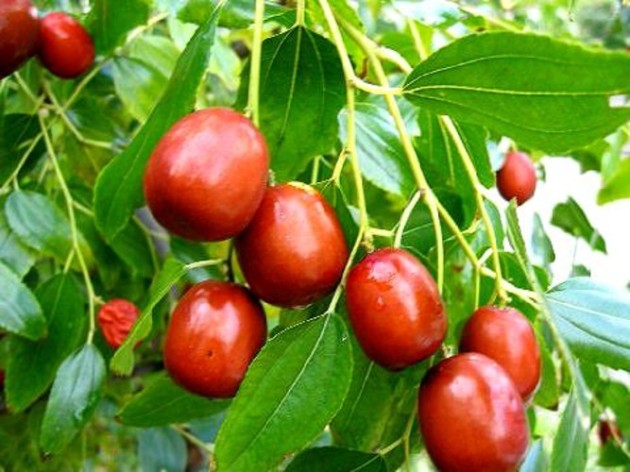
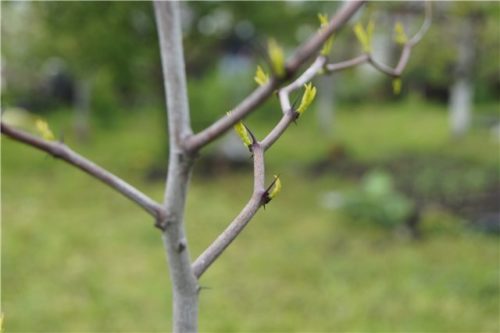
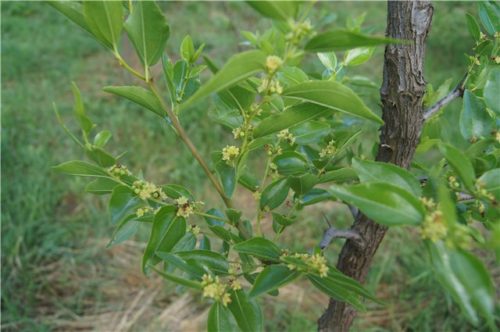
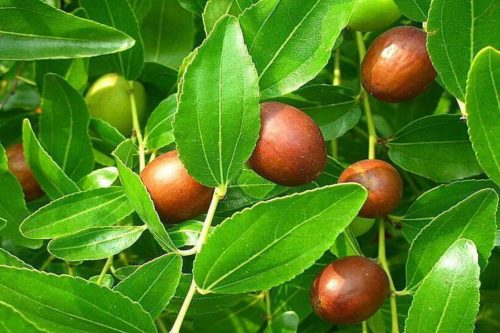
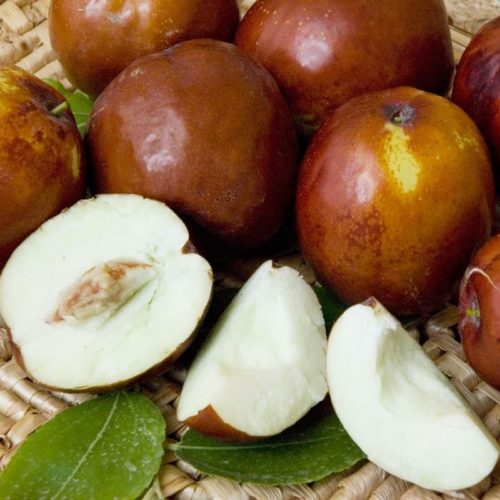
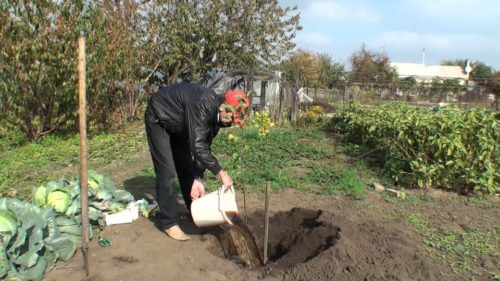
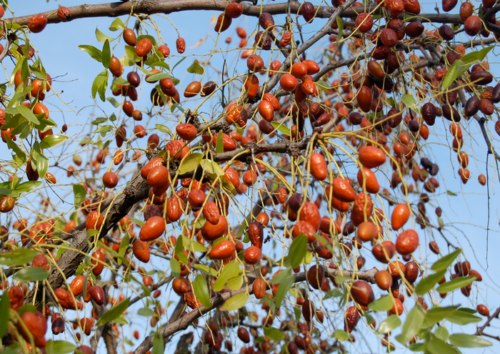
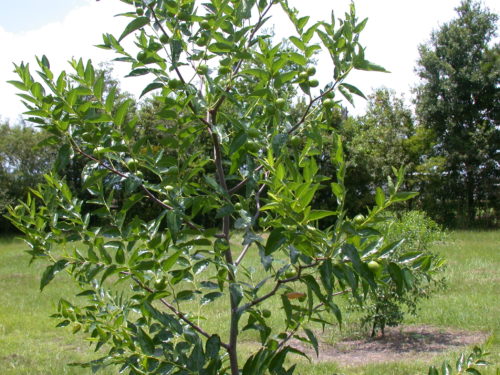
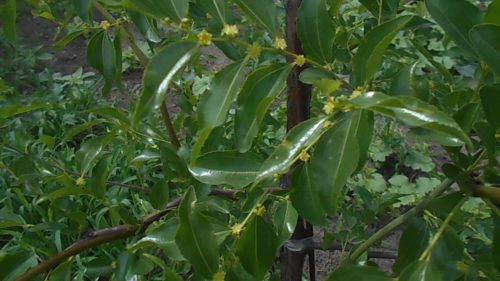
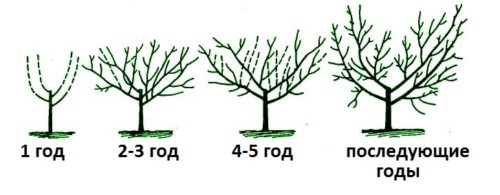
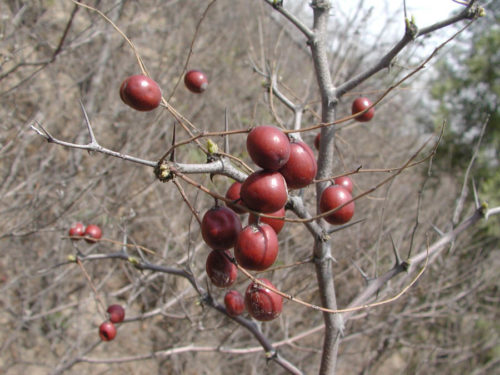
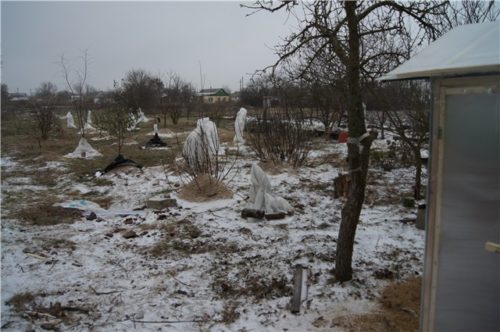
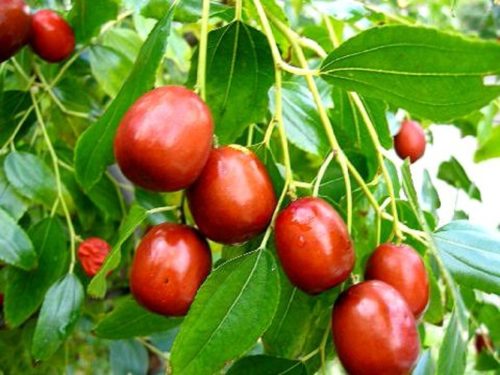
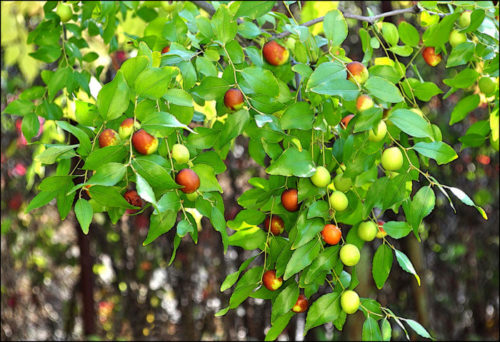
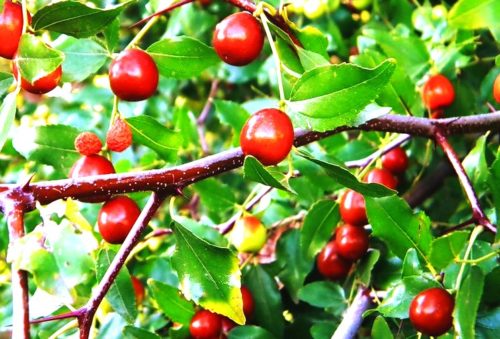
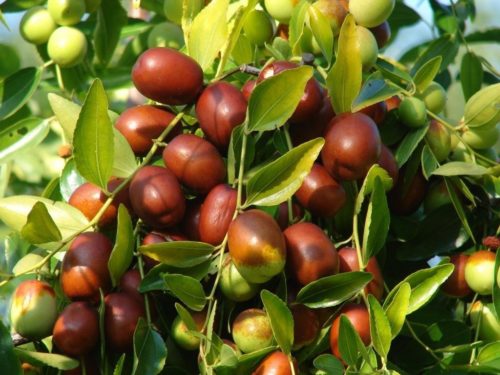












 Start a discussion ...
Start a discussion ...